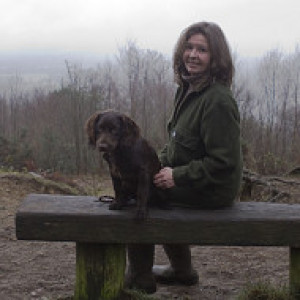The Old Hoose
It was over 40 years ago that a dark and dingy mansion house next door, last changed hands. The new and seemingly eccentric owners brought life, light and colour to what I remember previously as being an austere and intensely forbidding building.
The buyers were Alberto Morrocco and his wife Vera. Alberto was a renowned artist and head of, what was then, Duncan and Jordanstone Art College, Vera an accomplished artist in her own right. They had two grown sons, who had long since left home, and a late lamb, the same age as my sister. For a while, Lisa and Fiona went to school together and they have remained close friends ever since.
The house became so exciting. The walls transformed, painted with all the colours of the rainbow, hung with bright wall papers. Multi coloured carpets hung from the banisters and hats of all shapes and sizes adorned stands in the hall.
Where paintings of all sizes and styles didn't grace the walls, Alberto painted murals around the house. Every available surface was covered with interesting art work and objects that were used as subjects and props together with sculptures and other works created by themselves or their students. It was an incredible place that echoed with laughter and filled with the mixed odours of the artists at work, herbs and wonderful cooking.
Alberto died in 1998 and, very sadly, Vera last year. Now the house has been emptied. Fiona and I went in for a last look around. Aside the many colour schemes and changes that the Morrocco family made, I was amazed at the original features that still remain, unaltered in time.
I can't resist sharing this scullery room with you. Situated, directly opposite what was Alberto's studio, it contains not just fascinating sanitary features but also evidence of Alberto's past utensil and brush cleaning activities.
Above the butler sink is what must have been one of the first ever water filters. I've never seen anything like it and the only reference to them I have found on the internet in haste is the following:
"John Doulton founded his first pottery in 1815. As early as 1827, his son Henry, developed ceramic filters for removing bacteria from drinking water. Because the Thames River was heavily contaminated with raw sewage; cholera and typhoid epidemics were rampant. Queen Victoria commissioned Henry to produce a water filter for the Royal household. His Research and Development department created micro porous ceramic cartridges capable of removing bacteria with better than 99% efficiency."
The antique water closet is even more amazing.
A cross between a toilet, sink and slop bucket, I can see how this may have been an original lavatory! If anyone knows anything about them, please tell. I'm curious.

Comments
Sign in or get an account to comment.


